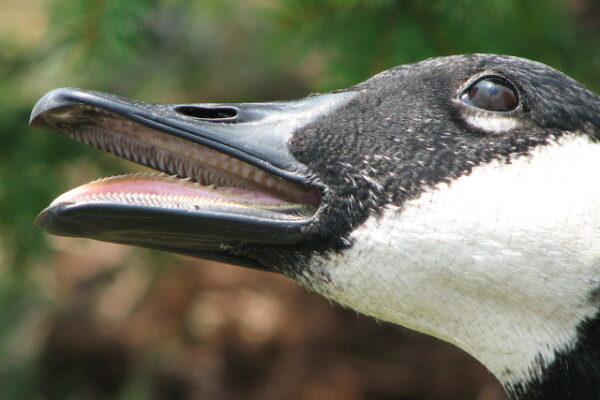Bald and golden eagles are among the most amazing acrobatic artists, with wingspans of over six feet. As they glide gracefully on thermal updrafts, it is evident that they were designed for long-term flight. However, what are these fabled raptors’ maximum aerobic capabilities?
How much time can an eagle fly before it becomes tired?
In case you’re short on time, the prompt response is as follows: Eagles may travel hundreds of miles in a single flight, flying nonstop for eight to ten hours. However, as we’ll see below, elements like the weather, winds, age, and purpose affect how long their journey lasts.
Adaptations for Eagle Flight
Eagles are magnificent creatures that fly through the heavens with elegance and accuracy. They can remain in the air for long stretches of time because of a number of adaptations.
Broad wingspan and light body
Eagles’ enormous wingspan relative to their body size is one of the main adaptations that allows them to fly in the air for extended periods of time. They are able to glide across the skies with ease and capture air currents as a result. Depending on the species, an eagle’s wingspan might be anywhere between six and eight feet.
Eagles also have hollow bones, which helps them stay in the air for longer periods of time by lowering their total body weight.
Sharp vision
Eagles possess exceptional vision, which is an additional vital adaption for their extended flight. Their eyes are designed specifically to detect prey at a vast distance when they fly through the skies. Eagles may see fish or tiny mammals from several hundred feet overhead thanks to their keen eyesight.
This enables them to precisely maneuver and plan their fall in order to capture their prey.
Skyrocketing abilities
Eagles are adept at taking advantage of air currents. They are renowned for having wings that they can flap for hours at a time. Eagles may get height and sustain flight with little effort by taking advantage of updrafts or thermals, which are warm air columns rising from the earth.
They can remain in the air for longer periods of time and save energy by using this flying strategy.
A National Audubon Society research states that some eagle species have been known to remain in the air for as long as eight hours at a time. This amazing accomplishment highlights these birds’ extraordinary flying adaptations.
Visit the National Audubon Society website to find out more about the flying adaptations of eagles. This organization offers comprehensive information on a variety of bird species and their distinctive traits.
Normal Flight Schedules for Eagle
Daily hunts last two to four hours.
Eagles are renowned for having extraordinary flying skills that enable them to glide through the heavens with elegance and accuracy. During their daily hunting expeditions, eagles usually fly for two to four hours.
They search the area for possible food, such as fish, small animals, or even other birds, using their acute vision during this period. When they locate a prey, they dive down at breakneck speeds and use their razor-sharp talons to grab it from the water or the ground.
These magnificent birds of prey demonstrate their agility and stamina via their hunting activity.
Flights for migration: 8–10 hours
Another interesting facet of eagle behavior is migration. These birds travel great distances from their breeding and wintering sites, making lengthy trips. Eagles may remain in the air for long stretches of time during migratory flights; usually 8 to 10 hours.
The thought of these amazing animals flying through the sky for such long stretches of time, depending only on wind currents and their strong wings to get them where they’re going, is very amazing.
The eagle’s life cycle depends on migration since it gives them access to a variety of food sources and increases their chances of surviving.
Maximum tests for lab endurance
The maximum flying duration of eagles has been determined by researchers using laboratory endurance experiments, while real-world flight periods vary based on many conditions. In these experiments, the birds are placed in controlled settings, and their ability to fly is observed.
These investigations have shown that eagles can remain in the air for very extended lengths of time, with some individuals flying continuously for as long as 14 hours, however exact statistics may vary. These endurance tests provide insightful information on the physical limitations and capacities of these magnificent birds.
Factors Limiting the Length of Flight
The capacity of eagles to fly across the sky for lengthy periods of time is well known. Nonetheless, a number of things may shorten the length of their trip. These include wind patterns, age and fitness levels, weather, and the needs of the mating season.
Weather circumstances
How long eagles can remain in the air is mostly determined by the weather. Eagles may have difficulty flying due to unfavorable weather conditions including thunderstorms, heavy rain, or high gusts.
To remain in the air, they depend on thermal currents and updrafts, which are often lacking during bad weather. Rain may also cause their feathers to become heavier, which makes it more difficult for them to continue flying.
Fitness level and age
An eagle’s age and level of fitness may also affect how long it can fly. It’s possible that younger eagles lack the stamina and muscle required for extended flight. Conversely, older eagles may see a decrease in their level of physical fitness, which may impact their capacity to soar for extended lengths of time.
A balanced diet and regular exercise are essential for maintaining ideal levels of fitness.
Demands of the breeding season
Eagles have extra duties during the breeding season that may cut into the amount of time they can spend in the air. They have to guard their area, locate appropriate nesting locations, and tend to their young. Their ability to spend as much time as possible in flight may be limited by the time and energy these activities entail.
It’s crucial to remember that eagles are very adaptive and can soar for long stretches of time, especially during the mating season.
patterns of wind
The way the wind blows may help or hurt an eagle’s ability to remain aloft. A constant, soft breeze is one kind of favorable wind condition that may assist eagles soar through the air with ease, saving energy and enabling them to remain up in the air for extended periods of time.
However, eagles may find it difficult to maintain steady flight amid high gusts or unstable winds, which might compel them to land sooner than planned.
During Flight Refueling and Resting
Eagles have evolved some amazing ways to save energy and extend their time in the sky in order to remain aloft. The capacity to glide and soar for lengthy periods of time is one of these tactics.
Gliding and taking off
Eagles are renowned for their remarkable gliding and flying skills, which enable them to go great distances without using a lot of energy. Eagles can easily spend hours in the air by using thermals and updrafts, which are columns of rising warm air.
The eagle’s broad wingspan is supported and lifted by these air currents, which enables it to fly to tremendous heights and sustain flight with little effort.
Brief landing intervals
Even though they can soar for lengthy periods of time, eagles do sometimes need to land to rest and refuel. The eagle may recover its strength during these short but sweet rests before flying to the sky once again.
Eagles may hang on cliffs or tree branches during these brief landing pauses, utilizing the opportunity to groom their feathers and survey their surroundings for possible prey.
Consuming prey in midair
The capacity of some eagle species to consume food while in mid-air is another amazing habit. Large raptors that can capture and devour food while in the air, like the golden eagle, are capable of doing this amazing feat.
They can remain in the air for extended periods of time and avoid having to land by doing this. This act demonstrates these magnificent birds’ amazing agility and flexibility.
It is crucial to remember that the precise amount of time an eagle can spend in the air varies based on a number of variables, including the species, the kind of weather, and the availability of prey. While some eagles can remain in the air for many hours, others may only be able to stay up for a shorter amount of time.
They can, however, use gliding and soaring skills, make quick landings, and even consume prey while in the air, all of which add to their remarkable air endurance.
Breakthrough Eagle Flights
Eagles are renowned for their amazing flying skills, and several record-breaking flights have shown the length of time these magnificent birds can spend in the air. Let’s examine a few of these astounding achievements.
Migration from Alaska to Japan
The flying endurance of eagles is shown by their journey from Alaska to Japan. Over 3,000 miles is the incredible trek hundreds of bald eagles do every year across the Pacific Ocean.
To cross the enormous body of water and arrive at their goal, these amazing birds must use their strong wings and excellent navigational abilities. It really is evidence of their fortitude and resiliency.
You can find comprehensive details and interesting facts about this amazing event on the National Park Service website, where you can also learn more about the migration from Alaska to Japan.
Sea eagles of New Zealand
The sea eagle, sometimes called the haast eagle, was said to have a remarkable wingspan of up to ten feet in New Zealand. These amazing birds could ride the thermals and fly through the air for long stretches of time.
Even though the haast eagle is no longer with us, scientists and bird lovers continue to be fascinated by its amazing flying talents.
For a comprehensive look at this remarkable animal, you may read the Te Ara Encyclopedia of New Zealand if you’re interested in knowing more about the haast eagle and its amazing flying skills.
GPS tracking with solar power
Technological developments have given scientists important new insights on the endurance and flying patterns of eagles. One such invention is GPS tracking driven by the sun, which allows scientists to follow eagle movements in real time.
Scientists are able to gather information on the birds’ flight time, altitude, and distance traveled by fitting them with small GPS trackers.
This technology has shown us how far and how long eagles can fly, providing valuable information about their flights. Additionally, it has illuminated their favored flight paths and habitats, supporting conservation efforts and contributing to the preservation of these amazing animals.
You may read fascinating articles and studies on solar-powered GPS tracking and its effects on eagle research on the BirdLife International website.
Final Thoughts
The eagle is a symbol of strength and independence due to its ability to fly for extended periods of time. Although eight hours in the air is the average, these expert aviators may reach twice that amount when circumstances permit. A greater appreciation for the eagle’s position as the ultimate aerial ruler comes from learning about its ability to fly.




![17 Beautiful Pink Birds [Images + IDs]](https://birdsology.com/wp-content/uploads/2023/05/3704553536_291e49c51d_b-600x400.jpg)
